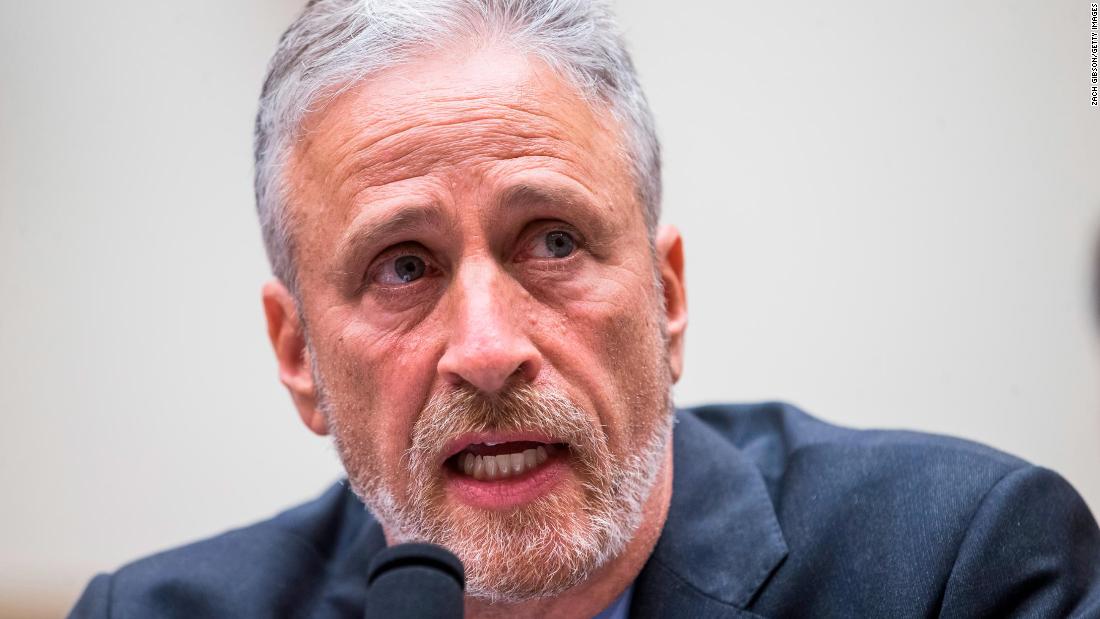The Glade commemorates the rescue and recovery effort that lasted
nine months after the terrorist attacks and
honors everyone who has died or is suffering from 9/11-related illnesses. It
opened on May 30 of this year, the anniversary of the formal end of recovery operations in 2002.
Located on the 9/11 Memorial, the tribute is the most recent acknowledgement made on behalf of these men and women by the 9/11 Memorial & Museum since we first recognized the gravity of this health crisis in our
exhibitions and public programs.Stewart’s testimony was delivered in support of the
“Never Forget the Heroes: Permanent Authorization of the September 11th Victim Compensation Fund Act,” which was
advanced Wednesday unanimously by the House Judiciary Committee. As Stewart so eloquently
stated, the first responders, rescuers and recovery workers “brought our country back, … (and) gave a reeling nation a solid foundation to stand back upon.”
Continuing to put faces and names to the horrific events of the day is crucial to never forgetting the sacrifice that many men and women made — and continue to make. Let me tell you about a few of these men and women, some of whose stories are preserved in the museum and shared with millions of visitors each year from around the world.
Sonia Agron, now a docent for the museum, is a former EMS specialist who volunteered with the American Red Cross at a respite center near the World Trade Center. Her husband, Joe, was an NYPD officer, who worked at Ground Zero and at the emergency command and family assistance centers at Piers 92 and 94 in Manhattan.
Both are now sick with cancer; Sonia is suffering from post-traumatic stress disorder and both endure other 9/11-related health issues. Their daughter recognizes how 9/11 continues to impact these people, their families, their friends and all of us. “So 9/11 just doesn’t end for us anymore, does it, mom?” the Agrons’ daughter asked them.
Highlighting the national impact, there’s Florida firefighter
Mike Nugent, one of thousands of volunteers from around the country who dropped everything and came to New York for a week of 16-hour long days working amid the World Trade Center rubble. Special operations chief Nugent, who currently works for Florida’s Broward Sheriff Fire Rescue,
suffers from sarcoidosis, from which he nearly died two years ago.
Other agencies were also affected, as were lower Manhattan residents and workers, students and teachers at schools in the area, survivors and many others. The
most recent data in New York from the organization Citizens for the Extension of the James Zadroga Act details that more than 193 members of the FDNY have died from 9/11-related illnesses, while the NYPD reports that more than 212 officers have died — nearly 10 times more than the
23 police officers killed in the attacks.
In his testimony, Stewart also referenced FDNY firefighter
Ray Pfeifer, who spent his whole career with Engine 40 and worked the first nine days straight after September 11 to find the remains of his friends and colleagues, in hopes of bringing closure to their families. Pfeifer slept in the fire truck during those first days rather than leave the site and was disappointed so few remains could be found. He devoted the next nine months to working on the recovery.
He was
diagnosed with cancer in 2009. He died in 2017,
leaving behind his wife, Caryn, and their two children — a son, Terence, who now serves in the FDNY, and a daughter, Taylor.
These are only a few stories of the more than 400,000 men and women the
Centers for Disease Control estimates were exposed to World Trade Center toxins in the aftermath of 9/11.
The day before the Glade’s dedication last month, I heard from Sonia Agron, just home after weeks in the hospital. She wrote to tell me she would be there, and that it would “make up” for being in the hospital for treatment during her birthday and Mother’s Day. The next day, I found Agron with her family, and she proudly pointed to her daughter, who is expecting Sonia’s and Joe’s grandchild around Christmas. My heart broke as Sonia turned to me and said, “Now, they will have a place to come.”
Speaking at the dedication, Caryn Pfeifer recalled that her husband always said, “Do the right thing. Even when no one is looking.” Telling the stories of those who responded when we needed them most, of the health impacts of 9/11 and how they have shattered families and cut lives short is the right thing


